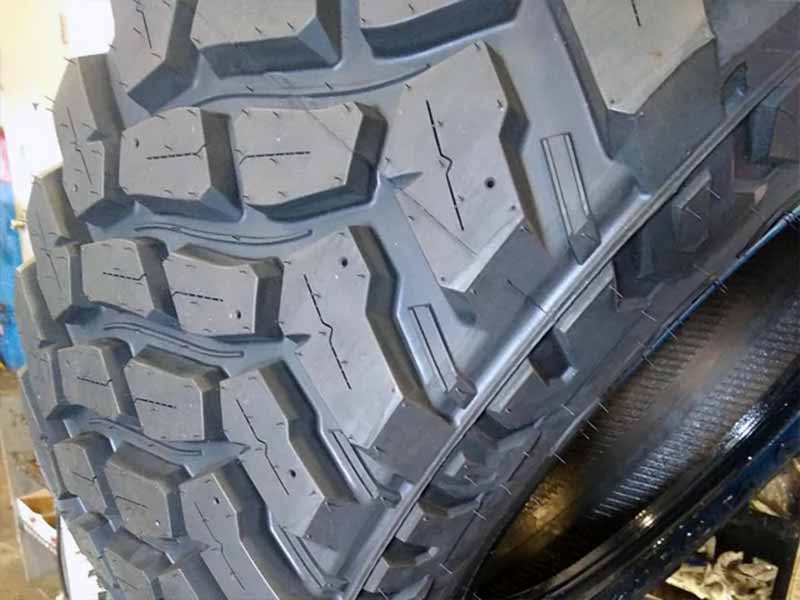Imagine you’re gearing up for an off-road adventure, and as you glance at the sky, you notice the looming dark clouds, signaling an impending downpour. A question pops into your mind: “Are my off road mud tires going to grip the road well in the rain?”
Are Mud Tires Good For Rain?
Mud tires, with their aggressive tread patterns and durable construction, can navigate through muddy and some wet off-road conditions effectively. However, on wet paved roads, especially during heavy rain, they may not offer the same level of performance and safety as tires designed specifically for wet road conditions.
In this article, we will explain the details of mud tires, exploring their design, performance, and safety aspects in wet conditions, both off-road and on paved surfaces. We’ll cover comparisons with other tire types, such as all-terrain and all-season tires, in the context of rain, providing insights to guide your tire choices for varied terrains and weather scenarios.
Let’s take a closer look.
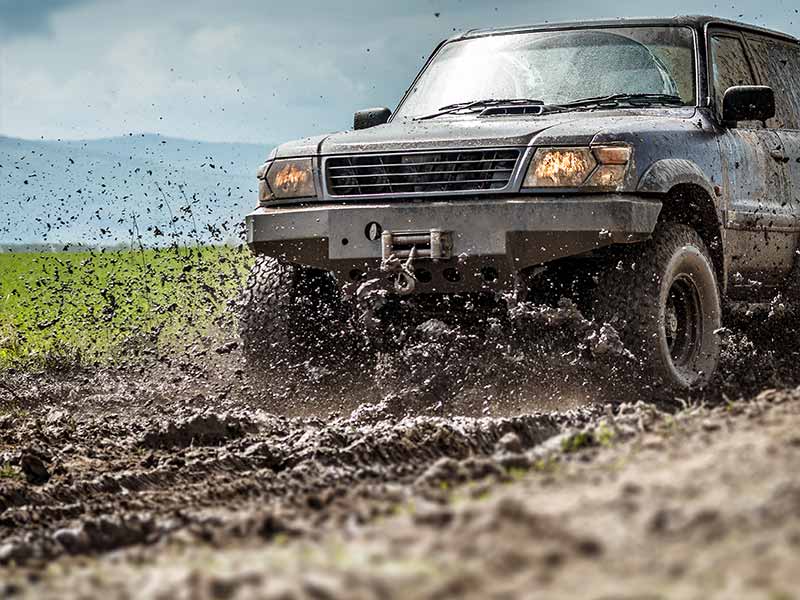
Mud Tires and Wet Conditions
Navigating through wet conditions, especially when it involves driving through rain and standing water, can be tricky. Mud tires have some unique characteristics that influence how they perform in these situations. Let’s explore this in a simple and easy-to-understand way.
What Happens When Tires Meet Water?
When your vehicle moves through wet areas, the tires have to push the water away to keep in contact with the road. If the water isn’t moved away quickly enough, the tire might ride on top of the water instead of the road, which is something we call “hydroplaning.”
Do Mud Tires Hydroplane?
What is Hydroplaning?
- Hydroplaning happens when a tire loses contact with the road and glides on a layer of water instead.
- It can cause the vehicle to slide or skid since the tire is not gripping the road.
Mud Terrain Tires and Hydroplaning
- Mud tires have deep grooves and wide channels designed to move mud away.
- These same grooves can also help move water away, reducing the risk of hydroplaning.
- However, the risk is not completely gone, especially at high speeds or in heavy rain.
Handling Standing Water with Mud Tires
What is Standing Water?
- Standing water refers to pools of water that collect on the road, often after heavy rain.
- Driving through standing water can be dangerous if the tires cannot maintain contact with the road beneath the water.
Mud Tires in Standing Water
- The deep grooves in mud tires can help navigate through standing water by channeling it away from the tire.
- However, if the water is too deep, it can still be risky to drive through, even with mud tires.
Light Rain vs. Heavy Rain
Mud Tires in Light Rain
- In light rain, mud tires can generally handle the wet conditions quite well due to their aggressive tread pattern.
- They can maintain a good grip on the wet road, providing stability and control.
Mud Tires in Heavy Rain
- In heavy rain, where there is a lot more water on the road, the risk of hydroplaning increases.
- Driving slowly and carefully is crucial in these conditions to maintain control of the vehicle.
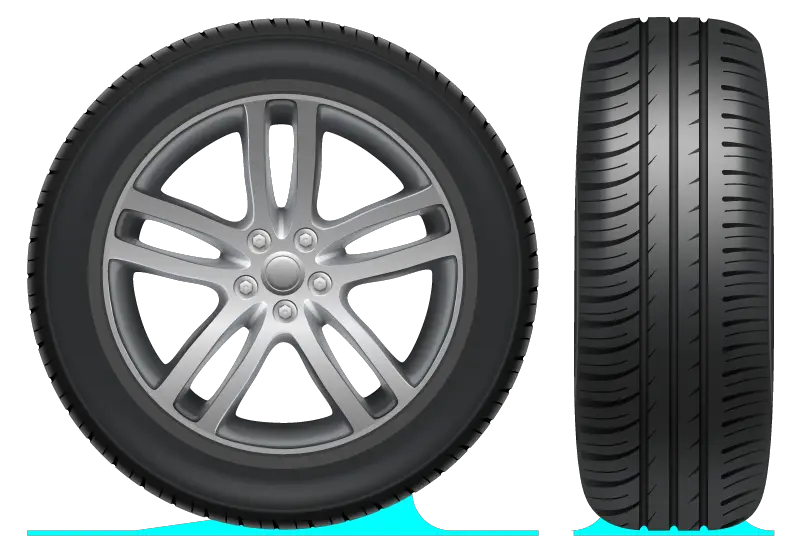
Mud Tires on the Road
When we talk about mud tires, it’s essential to understand how they behave not just off-road, but also on regular paved roads. Let’s explore this topic in a straightforward and uncomplicated manner.
What Makes Mud Tires Different?
Mud tires are specifically designed to handle tough, muddy terrains. Their unique features, while excellent for off-road adventures, can influence their performance on regular roads.
Key Features Impacting Road Performance
- Aggressive Tread: Designed to grip onto soft and loose surfaces like mud.
- Deep Grooves: Help to channel mud away but can create a louder noise on paved roads.
- Tough Rubber: Durable for off-road conditions but may wear differently on regular roads.
Are Mud Tires OK on the Road?
Noise and Vibration
- Mud tires can be noisier on paved roads due to their aggressive tread pattern.
- You might also feel more vibrations when driving at higher speeds.
Wear and Tear
- The tough rubber and large tread blocks can wear down more quickly on hard, paved surfaces.
- Uneven wear might occur, requiring more frequent tire rotations or replacements.
Handling and Comfort
- Mud tires might not provide as smooth a ride on paved roads as regular tires.
- Turning and stopping might feel different due to the large tread blocks and deep grooves.
Disadvantages of Mud Tires on Regular Roads
Fuel Efficiency
- The aggressive tread and heavier weight of mud tires can reduce fuel efficiency.
- Your vehicle might consume more fuel compared to using regular road tires.
Wet Pavement Challenges
- While mud tires can handle wet mud, wet pavement is different and might not provide the same level of grip.
- Caution and slower speeds are advised on wet paved roads.
Limited Snow and Ice Performance
- Mud tires are not designed for snow and ice and might not provide adequate traction in winter road conditions.
- For snowy and icy conditions, winter tires would be a safer choice.
Balancing Off-Road and On-Road Use
- If you frequently switch between off-road and on-road driving, consider how often you encounter each type of terrain.
- For primarily on-road driving with occasional off-road adventures, all-terrain tires might be a more balanced option.
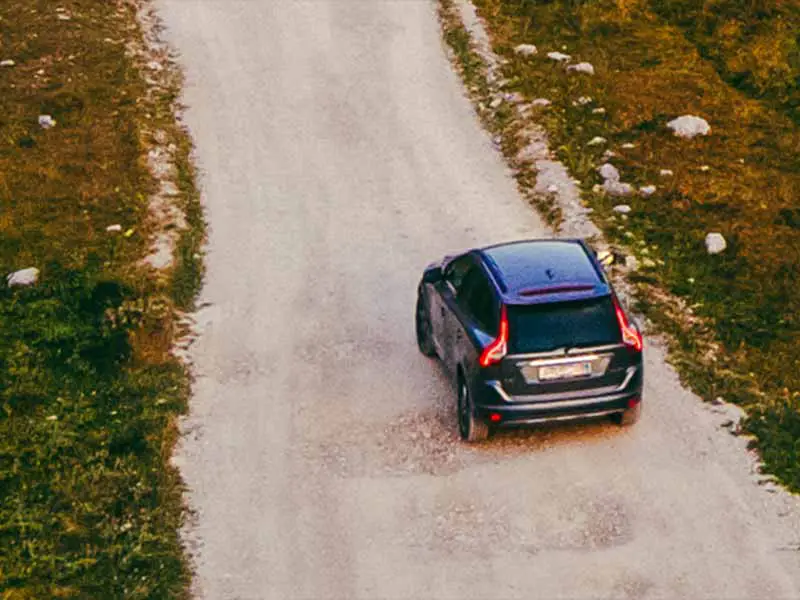
Mud Tires vs. All-Terrain Tires in Rain
Navigating through rainy conditions brings forward the challenge of choosing the right tire that ensures both safety and optimal performance. Let’s explore mud tires and all-terrain tires, especially focusing on their performance in the rain.
Mud Tires in Rain
Key Characteristics
- Deep Grooves: Effective in moving mud and some water away.
- Aggressive Tread: Provides grip in muddy conditions but might be noisy on paved roads.
Performance Aspects
- Off-Road: Excellent in muddy and some wet off-road conditions.
- On-Road: Can struggle with traction and may hydroplane on wet paved roads.
All-Terrain Tires in Rain
Key Characteristics
- Moderate Tread Depth: Designed to handle various terrains without being overly aggressive.
- Balanced Design: Aims to provide a mix of off-road capability and on-road comfort.
Performance Aspects
- Off-Road: Good in a variety of off-road conditions, including light mud and wet surfaces.
- On-Road: Typically offer better traction and a quieter ride on wet paved roads compared to mud tires.
Comparing the Two in Rainy Conditions
Safety and Traction
- Mud Tires: Can handle wet off-road terrains but might have limited traction on wet paved roads.
- All-Terrain Tires: Generally provide balanced performance and safer traction on wet paved roads.
Noise and Comfort
- Mud Tires: Tend to be noisier and might offer a rougher ride on paved roads.
- All-Terrain Tires: Usually provide a quieter and more comfortable ride on various surfaces.
Wear and Durability
- Mud Tires: Might wear out faster on paved roads due to the aggressive tread.
- All-Terrain Tires: Tend to offer longer tread life on paved roads and balanced durability off-road.
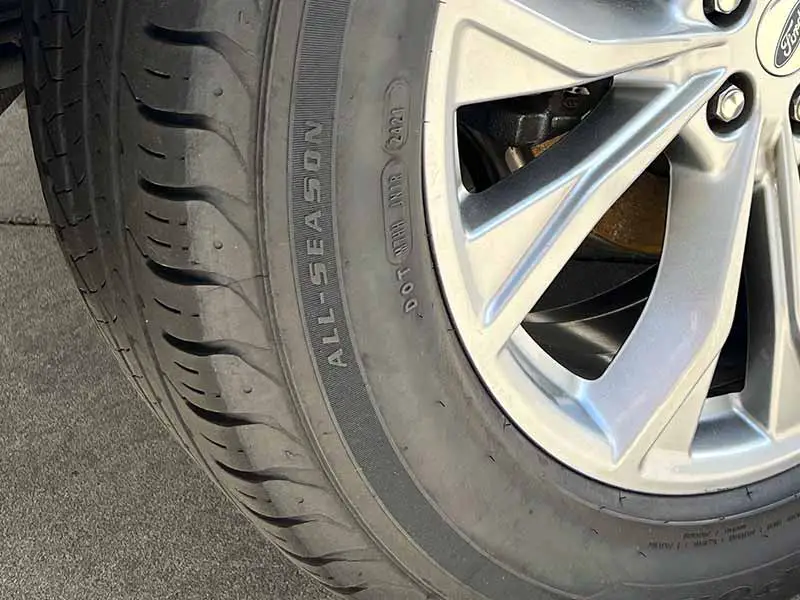
Mud Tires vs. All-Season Tires in Rain
When rain starts to pour, the tires on your vehicle become crucial in maintaining a safe and stable journey. In this section, we’ll explore and compare mud tires and all-season tires, focusing on their performance in rainy conditions.
Mud Tires in Rain
Key Characteristics
- Aggressive Tread: Designed to grip and traverse through muddy terrains.
- Deep Grooves: Effective for channeling mud and some water away.
Performance Aspects
- Off-Road: Superior in navigating through muddy and certain wet off-road conditions.
- On-Road: May face challenges like reduced traction and potential hydroplaning on wet paved roads.
All-Season Tires in Rain
Key Characteristics
- Versatile Tread: Designed to handle various weather conditions, including rain.
- Moderate Grooves: Aimed at providing stable traction on wet and dry roads alike.
Performance Aspects
- Off-Road: Limited capability in handling muddy and rugged terrains.
- On-Road: Generally offer stable and reliable performance on wet paved roads.
Comparing the Two in Rainy Conditions
Safety and Traction
- Mud Tires: Provide excellent traction in wet off-road conditions but may struggle on wet paved surfaces.
- All-Season Tires: Offer consistent and reliable traction on wet paved roads, enhancing safety during on-road drives.
Noise and Comfort
- Mud Tires: Likely to generate more noise and may offer a less smooth ride on paved roads.
- All-Season Tires: Typically ensure a quieter and more comfortable ride across various road types.
Wear and Durability
- Mud Tires: Can experience faster wear on paved roads due to their aggressive tread design.
- All-Season Tires: Designed to provide a balanced wear across various weather conditions and road types.
Resources
Below are some links you may find helpful when learning about tires
- Mud terrain vs. all terrain tires: Pros and cons – Discount Tire
- Ezra Dyer: The irrational allure of mud tires – Car and Driver
Final Thoughts
Navigating through the capabilities of mud tires has illuminated their mastery in muddy terrains and challenges on wet paved surfaces. While they excel in off-road escapades, their performance on slick city streets in the rain can be nuanced, necessitating cautious and informed tire choices.
Whether adventuring through wild trails or cruising urban roads, ensuring your tire selection aligns with your predominant driving conditions is pivotal for safe and thrilling journeys ahead.
Good luck and happy motoring.
